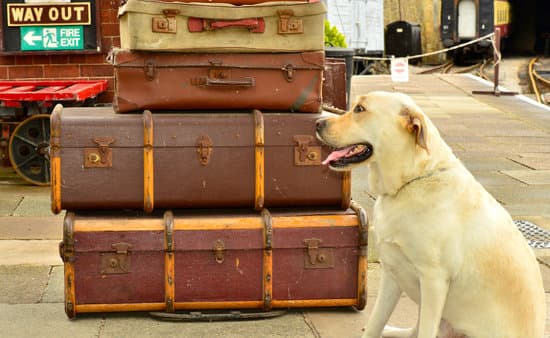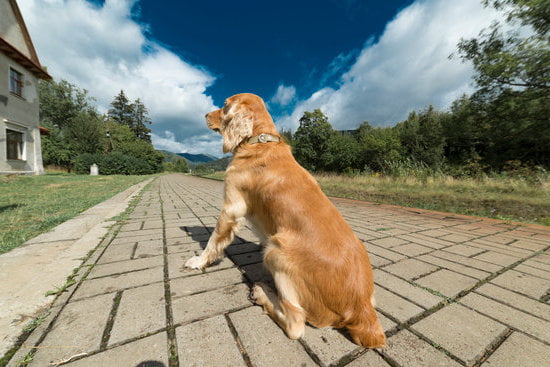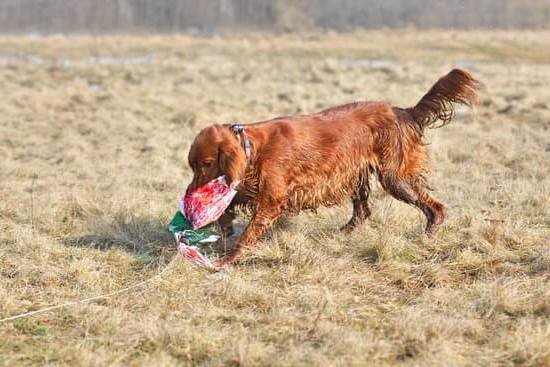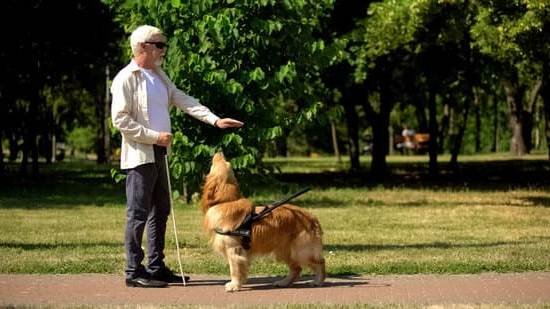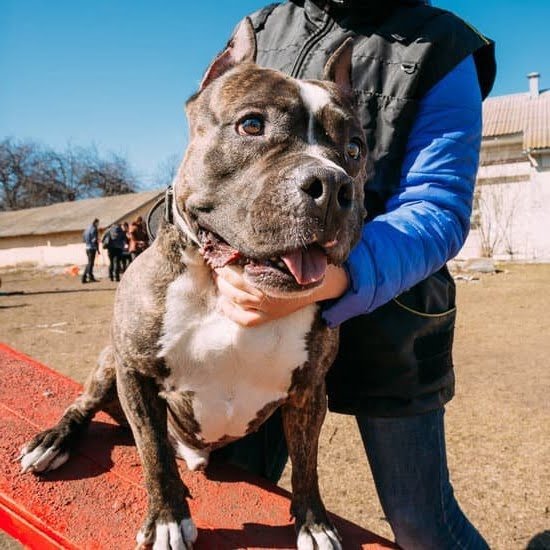Crate training adult dog can be a highly effective way to provide them with a safe and comfortable space while also offering numerous benefits for both the dog and their owner. Whether you’re looking to house train your adult dog, provide them with a secure environment, or simply give them a place to relax, crate training can be a valuable tool in achieving these goals.
In this article, we will explore the various advantages of crate training for adult dogs and how it can positively impact their behavior and well-being. We will also delve into the psychology of adult dogs and how they respond to crate training, as well as provide practical tips for choosing the right crate and introducing your adult dog to it.
Additionally, we will address common mistakes to avoid when crate training an adult dog and offer dos and don’ts for successful crate training.
Whether you are new to crate training or have struggled with it in the past, this comprehensive guide aims to provide you with the knowledge and tools necessary to successfully implement crate training with your adult dog. From troubleshooting resistance and anxiety to gradually increasing alone time in the crate, we will cover all aspects of crate training for adult dogs.
So, let’s dive in and explore how crate training can benefit your adult dog and enhance your relationship with them.
Understanding the Psychology of Adult Dogs and Crate Training
Building a Den-Like Environment
One of the key psychological aspects behind crate training for adult dogs is to create a den-like environment for them. In the wild, canines seek out small, enclosed spaces to rest and feel safe. A crate can mimic this natural instinct, providing your adult dog with a secure and comfortable space of their own. This understanding can help owners see crate training as a positive experience for their furry companions rather than a form of punishment.
Establishing a Safe Space
Adult dogs, especially those rescued or adopted from shelters, may have experiences or traumas that make them feel anxious or insecure in new environments. Crate training can provide them with a safe space where they can retreat to when feeling overwhelmed or stressed. Understanding this psychological aspect can help owners approach crate training with empathy and patience, recognizing that it can be a valuable tool in helping their adult dogs feel more at ease in their home.
Creating a Positive Association
When understanding the psychology of adult dogs in relation to crate training, it’s important to focus on building a positive association between the dog and their crate. By using rewards such as treats, toys, and praise during the introduction and initial stages of crate training, owners can help their adult dogs view the crate as a desirable place to be.
This positive reinforcement can play a significant role in shaping the way an adult dog perceives their crate, making the training process smoother and more effective.
How to Choose the Right Crate for an Adult Dog
Choosing the right crate for an adult dog is crucial in ensuring successful crate training. There are several factors to consider when selecting a crate for your furry friend. First, you need to think about the size of the crate. It should be big enough for your dog to stand up, turn around, and lie down comfortably. However, it should not be too large as dogs are den animals and feel more secure in a cozy space.
Another important aspect to keep in mind is the material of the crate. You have the option of choosing between wire crates, plastic crates, and soft-sided crates. Wire crates are generally easier to clean and provide better ventilation, but some dogs prefer the privacy and security offered by plastic or soft-sided crates.
Additionally, consider whether your adult dog has any specific needs or tendencies that may impact their experience with the crate. For example, if your dog tends to chew or has anxiety issues, a heavy-duty or indestructible crate may be necessary. On the other hand, if your dog enjoys burrowing or feels safer in enclosed spaces, a covered crate may be preferred.
Once you have considered these factors and chosen a suitable crate for your adult dog, it’s essential to properly introduce them to their new space and make it a positive experience. This can help set the stage for successful crate training as your dog becomes accustomed to using their crate as a safe and comfortable haven.
| Factors | Considerations |
|---|---|
| Size of Crate | The right size allows comfort without being too spacious |
| Material | Wire for ventilation; plastic or soft-sided for privacy/security |
| Specific Needs | Anxiety issues may require heavy-duty crates; preference for enclosed spaces may require covered crates |
Step-by-Step Guide to Introducing an Adult Dog to Their Crate
Introducing an adult dog to their crate is an important part of successful crate training. Whether you have adopted an adult dog or you are starting the crate training process for the first time, taking the right steps can help make the transition smooth and comfortable for your furry companion.
Choosing the Right Location
When introducing your adult dog to their crate, it’s essential to select the right location for the crate. Choose a quiet area in your home where your dog can feel safe and secure. Avoid placing the crate in high-traffic areas or near loud noises that could cause anxiety for your dog.
Creating a Positive Association
To help your adult dog adjust to their crate, it’s important to create a positive association with the space. Place comfortable bedding, toys, and treats inside the crate to entice your dog to enter willingly. Encourage them to explore the crate on their own terms without any pressure.
Gradual Introduction
When introducing your adult dog to their crate, take it slow and allow them to acclimate at their own pace. Begin by leaving the door of the crate open and allowing your dog to come and go as they please. As they become more comfortable, start feeding them meals near the crate and eventually inside it.
By following these steps, you can help set up a positive experience for your adult dog when introducing them to their crate. Patience, consistency, and positive reinforcement are key components of successful crate training for adult dogs.
Common Mistakes to Avoid When Crate Training an Adult Dog
Crate training can be a very effective tool for adult dogs, but it’s important to avoid some common mistakes that could hinder the process. Here are some key pitfalls to steer clear of when crate training your adult dog:
1. Using the Crate as a form of punishment: One of the biggest mistakes people make when crate training their adult dog is using the crate as a form of punishment. This can create negative associations with the crate and lead to aversion or anxiety towards it. Instead, the crate should be associated with positive experiences like treats, toys, and comfort.
2. Leaving the dog in the crate for extended periods: Another mistake to avoid is leaving your adult dog in the crate for too long. Dogs have their physical and psychological needs, and being confined for extended periods can lead to restlessness, discomfort, and even behavioral issues.
3. Not making the crate comfortable: It’s essential to make sure that your adult dog’s crate is a comfortable and inviting space. This means providing soft bedding, toys, and even something that smells like you (such as a t-shirt) to help them feel secure and at ease in their new environment.
By avoiding these common mistakes and following a patient, consistent approach with your adult dog, you can help them see their crate as a safe haven rather than a source of stress. Remember that every dog is different, so it’s essential to tailor your approach based on your individual pet’s needs and personality traits.
Crate Training Dos and Don’ts for Adult Dogs
When it comes to crate training an adult dog, there are several dos and don’ts to keep in mind in order to ensure a successful and positive experience for both the dog and their owner. One important “do” is to make the crate a comfortable and inviting space for the dog. This can be achieved by placing soft bedding, toys, and treats inside the crate to create a positive association with the space.
Another crucial “do” is to make sure that the adult dog has plenty of exercise and mental stimulation before being crated. A tired and mentally stimulated dog is more likely to settle down calmly in their crate. Additionally, it’s important to gradually increase alone time in the crate for an adult dog. This can be done by starting with short periods of time in the crate while gradually building up to longer durations.
On the other hand, some “don’ts” of crate training an adult dog include using the crate as a form of punishment or confinement. The crate should always be associated with positive experiences, so forcing a dog into their crate or using it as a time-out area can create negative associations. It’s also important not to leave an adult dog crated for extended periods of time without breaks for bathroom breaks, exercise, and social interaction.
Overall, following these dos and don’ts of crate training can lead to a successful and harmonious experience for both adult dogs and their owners.
| Crate Training Dos | Crate Training Don’ts |
|---|---|
| Make the crate comfortable with bedding, toys, and treats | Don’t use the crate as punishment or confinement |
| Ensure plenty of exercise and mental stimulation before crating | Avoid leaving an adult dog crated for extended periods without breaks |
| Gradually increase alone time in the crate | Don’t force a dog into their crate or use it as a time-out area |
Troubleshooting
Crate training adult dogs can be a wonderful tool for both the pet and their owner. However, it’s not uncommon for an adult dog to exhibit resistance or anxiety when first introduced to crate training. This section will cover some common issues owners may encounter and provide tips for dealing with them effectively.
Some common signs of resistance or anxiety in crate training include whining, barking, pawing at the crate, or attempting to escape. It’s important for owners to understand that these behaviors are normal reactions as the dog adjusts to this new environment. Here are some tips for dealing with resistance and anxiety in crate training:
- Be patient: Remember, crate training is a process and it may take time for your adult dog to feel comfortable in their new space.
- Gradual introductions: Start by introducing the crate as a positive and inviting space. Place treats or toys inside to encourage your dog to enter on their own.
- Avoid forcing the dog into the crate: Forcing an adult dog into the crate can create negative associations with the space, leading to increased anxiety. Instead, work on building positive associations through patience and gradual introductions.
It’s essential for owners not to give up too quickly if their adult dog exhibits resistance or anxiety during crate training. With consistent and patient efforts, most dogs can become comfortable and even enjoy spending time in their crates.
Gradually Increasing Alone Time in the Crate for an Adult Dog
Once your adult dog has become comfortable with spending short periods of time in their crate, it’s time to gradually increase the length of time they spend alone in the crate. This is an important step in crate training, as it helps your dog learn to be comfortable and relaxed in their own space even when you’re not around.
Start by leaving your dog alone in their crate for a few minutes at a time, then gradually increase the duration as they become more relaxed and confident. Make sure to use positive reinforcement techniques such as treats and praise when you leave and return to help your dog associate being alone in the crate with positive experiences.
It’s important not to rush this process, as doing so can lead to anxiety and regression in your dog’s crate training progress. Take it slow and be patient, and remember that every dog is different – some may take longer to adjust than others.
As your adult dog becomes more comfortable spending extended periods of time alone in their crate, you can start leaving them in the crate while you’re away from home for short periods. Make sure to provide plenty of mental stimulation, such as puzzle toys or chew toys, to keep them occupied while they’re in the crate. With time and consistent training, most adult dogs will learn to see their crate as a safe and comforting place to relax.
Real-Life Success Stories
Crate training adult dogs may seem like a daunting task, especially if the dog has never been introduced to a crate before. However, many adult dogs have not only adapted well to crate training but have also thrived as a result. These real-life success stories serve as proof that with patience, consistency, and positive reinforcement, adult dogs can benefit greatly from crate training.
One such success story is of Max, a 5-year-old rescue dog who struggled with separation anxiety when his owners left for work. After implementing crate training, Max’s anxiety decreased significantly, and he now sees his crate as a safe space where he can relax and feel secure. His owners noticed a remarkable improvement in his behavior and overall well-being.
Another inspiring story is that of Bella, an 8-year-old Labrador who used to display destructive behavior when left alone at home. With the help of crate training, Bella’s destructive behaviors stopped, and she no longer showed signs of distress or anxiety when her owners were away. Bella now willingly enters her crate on her own when she needs some quiet time to herself.
These real-life success stories demonstrate that even adult dogs can benefit from crate training. It has the potential to alleviate anxiety, provide security, and improve overall behavior in adult dogs – making it a valuable tool for dog owners looking to provide their pets with comfort and structure. Through patience and positive reinforcement, adult dogs like Max and Bella have shown that they too can thrive with crate training.
Conclusion
In conclusion, crate training can greatly benefit adult dogs and their owners in various ways. It provides a safe and comfortable space for the dog to retreat to, especially during times of anxiety or stress. The crate can also help with behavior management by giving the dog a designated area for rest and relaxation. Additionally, crate training can aid in the process of housebreaking an adult dog, setting clear boundaries within the home.
While some may believe that crate training is only effective for puppies, it is important to understand that adult dogs can also benefit from this practice. With patience and proper training techniques, even older dogs can learn to see their crate as a positive space. Using positive reinforcement and gradual introduction, owners can successfully acclimate their adult dogs to their crate.
Overall, crate training adult dogs is a valuable tool for pet owners who want to provide structure and security for their furry companions. By understanding the psychology of adult dogs and implementing the right training methods, crate training can lead to a happier, more well-adjusted dog and a more harmonious household for everyone involved.
So if you have an adult dog at home that could benefit from crate training, don’t hesitate to start the process – with time and dedication, it’s possible for any adult dog to thrive with this practice.
Frequently Asked Questions
Can an Adult Dog Be Crate Trained?
Yes, an adult dog can definitely be crate trained. It may take a bit more patience and time compared to training a puppy, but with positive reinforcement and consistency, adult dogs can learn to love their crates.
At What Age Is It Too Late to Crate Train a Dog?
It is almost never too late to crate train a dog. While it may take longer for an older dog to adjust to the new routine, with proper training and patience, even senior dogs can benefit from crate training for various reasons such as safety and anxiety reduction.
Should I Crate My Older Dog at Night?
Whether or not to crate your older dog at night depends on your individual dog’s needs and habits. If your older dog is comfortable in the crate and sleeps well there, it can provide them with a sense of security and routine.
However, if your older dog has never been crated before or does not respond well to it, it might not be the best option for them during nighttime.

Welcome to the blog! I am a professional dog trainer and have been working with dogs for many years. In this blog, I will be discussing various topics related to dog training, including tips, tricks, and advice. I hope you find this information helpful and informative. Thanks for reading!

